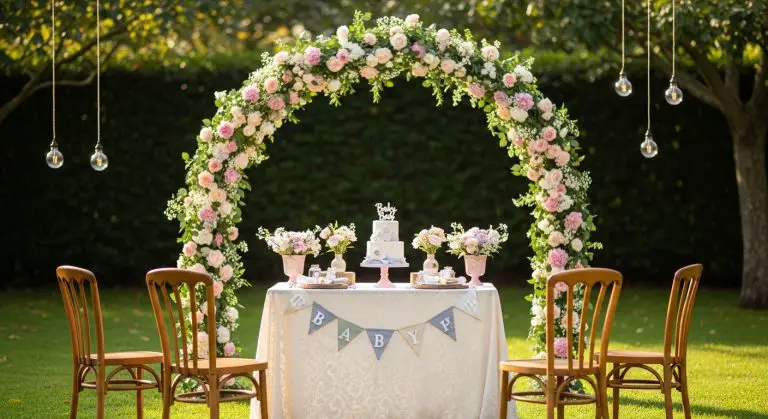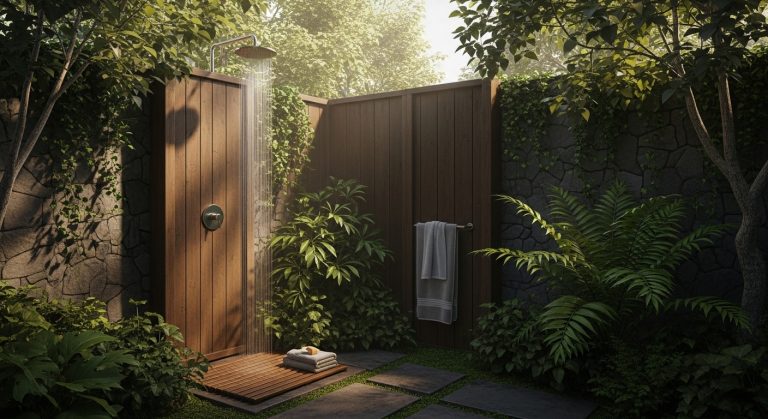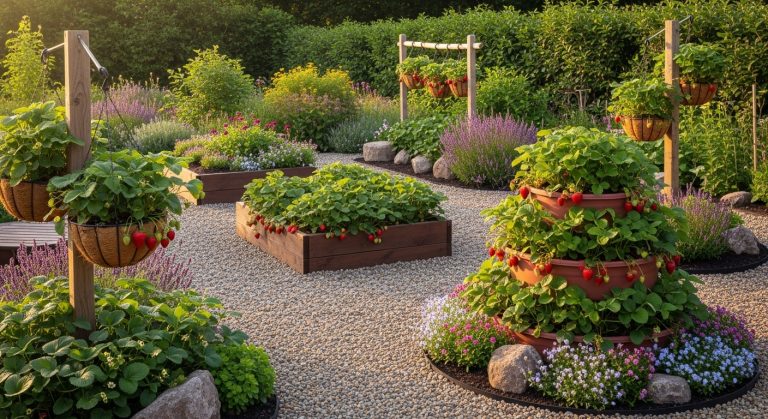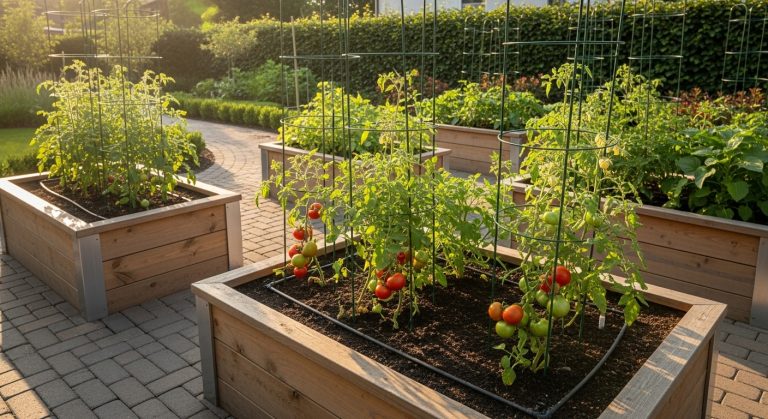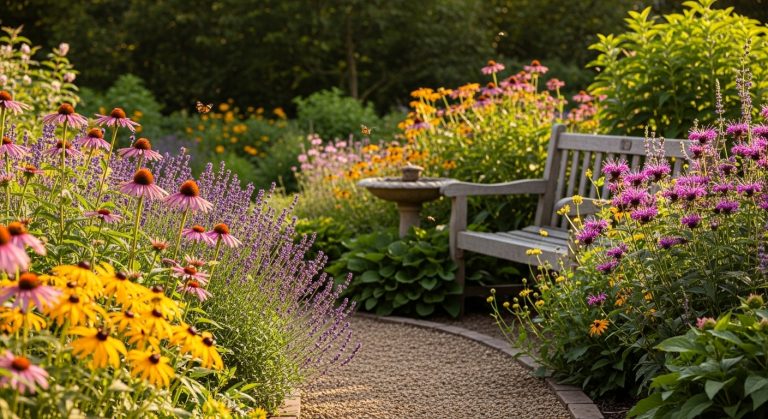Potted Herb Garden Ideas: 15 Creative Ways to Grow Fresh Flavor Anywhere
Ever wished you could snip a handful of basil right off your counter or clip some rosemary for dinner straight from your balcony? That’s the charm of a potted herb garden — fresh, aromatic, and endlessly creative. Whether you live in a city apartment or a country home, growing herbs in pots gives you flexibility, beauty, and (let’s be honest) bragging rights when your guests ask where you got that mint.
Potted herbs don’t just feed your recipes; they transform your space. The sight of green leaves by your window or a cluster of terracotta pots on your patio instantly makes your home feel alive. And the best part? You don’t need a green thumb — just a bit of curiosity, sunlight, and patience.
Let’s explore 15 brilliant potted herb garden ideas that fit every style, space, and budget — from sleek modern arrangements to rustic farmhouse setups.
1. Classic Terracotta Pots
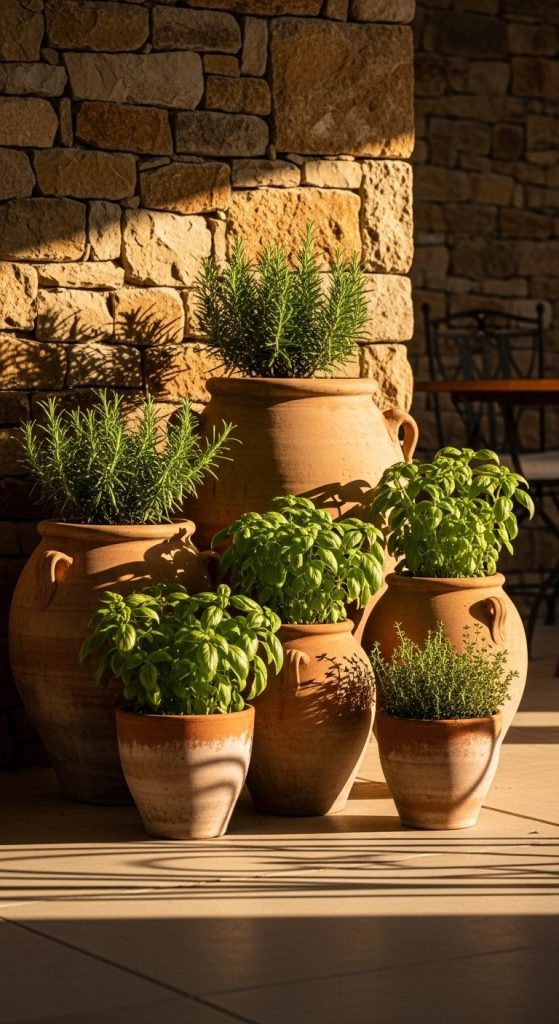
Sometimes, the simplest ideas never go out of style. Terracotta pots have been the go-to for centuries because they breathe, age beautifully, and make your herbs look like they belong in an Italian courtyard.
Pros:
- Breathable clay prevents root rot by allowing airflow.
- Timeless, earthy aesthetic.
- Inexpensive and easy to find.
Cons:
- Dries out faster than plastic or glazed pots.
- Can crack in cold temperatures.
Takeaway:
If you want a classic, low-fuss potted herb garden, terracotta is your reliable (and good-looking) choice.
2. Mason Jar Herb Garden
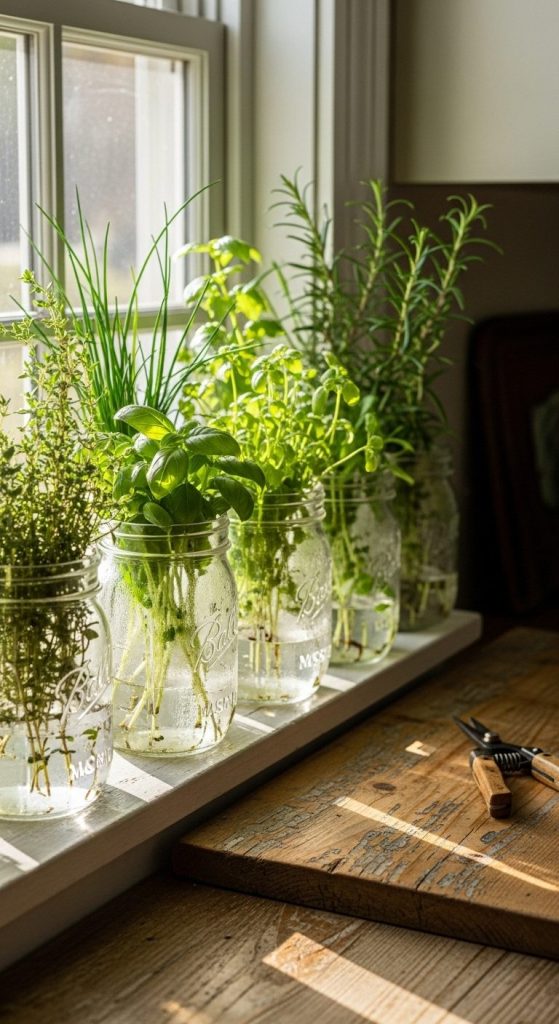
Who knew kitchen storage could double as a garden? Mason jars are perfect for small herb plants like thyme or chives, especially in tight spaces.
Pros:
- Charming farmhouse style that looks great indoors.
- Ideal for sunny kitchen windowsills.
- Budget-friendly and DIY-friendly.
Cons:
- No natural drainage holes (you’ll need to add rocks at the bottom).
- Not ideal for deep-rooted herbs.
Takeaway:
Perfect for rustic charm and compact kitchens — just remember to manage water carefully!
3. Vertical Hanging Pots

Running out of counter or floor space? Go vertical. Hanging planters or wall-mounted pots turn any blank wall into a living piece of art.
Pros:
- Maximizes small spaces.
- Adds visual interest and greenery at eye level.
- Great for sunny walls near windows.
Cons:
- Uneven watering can be tricky.
- Heavier setups need strong wall support.
Takeaway:
A stylish, space-saving solution for modern apartments or balconies.
4. Tiered Herb Stand
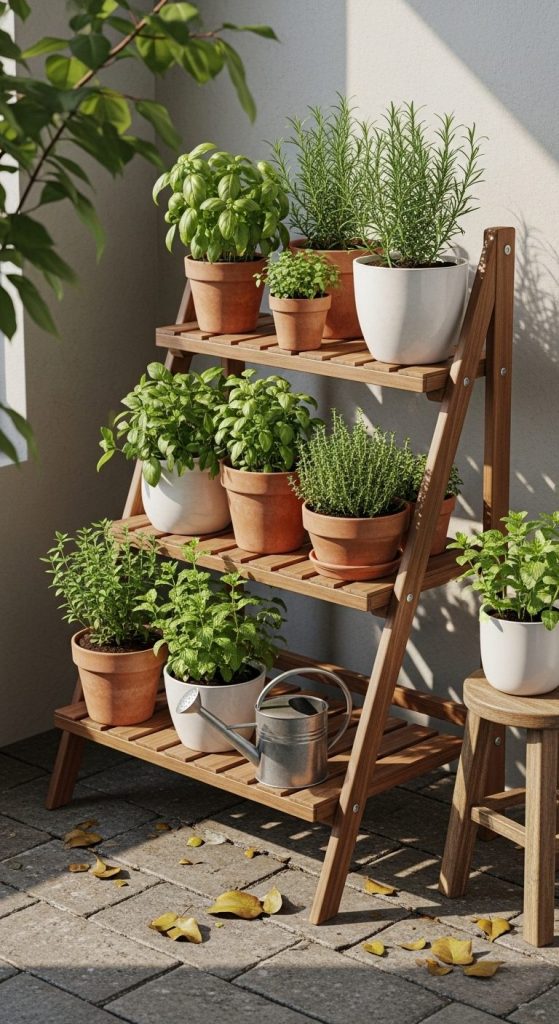
A tiered stand (wooden, metal, or bamboo) lets you grow multiple herbs in a small footprint — think of it as a mini garden tower.
Pros:
- Efficient use of vertical space.
- Easy to move and rearrange.
- Visually appealing and organized.
Cons:
- Lower levels might get less sunlight.
Takeaway:
Tiered stands are perfect for patios or balconies where sunlight shifts during the day.
5. Hanging Basket Herb Garden
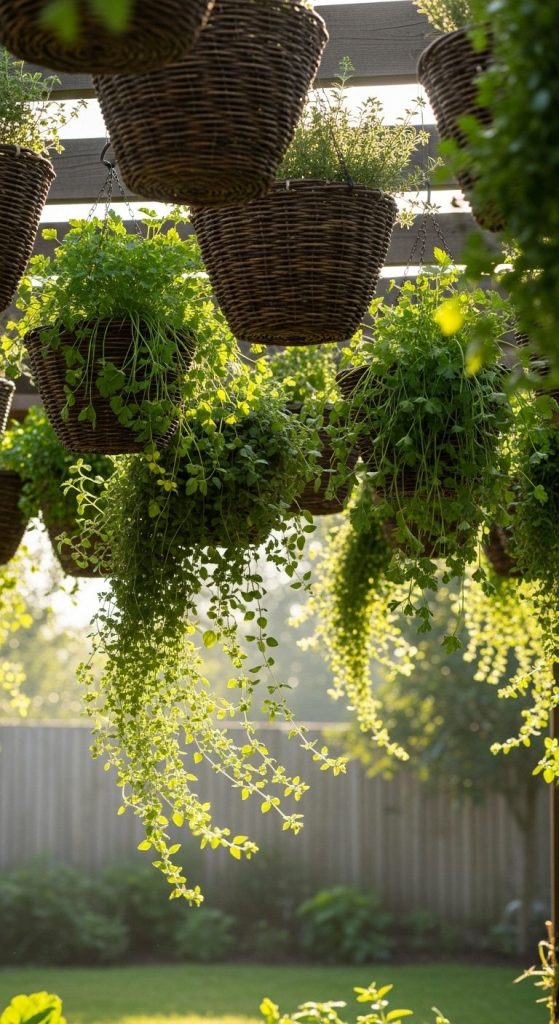
Hanging baskets aren’t just for flowers — they’re great for herbs like parsley, oregano, and mint.
Pros:
- Air circulation keeps herbs healthy.
- Adds greenery at varying heights.
- Works beautifully in balconies or pergolas.
Cons:
- Requires regular watering (baskets dry out fast).
Takeaway:
A breezy, space-efficient idea that brings a touch of whimsy to your outdoor or indoor setup.
6. Recycled Tin Can Planters
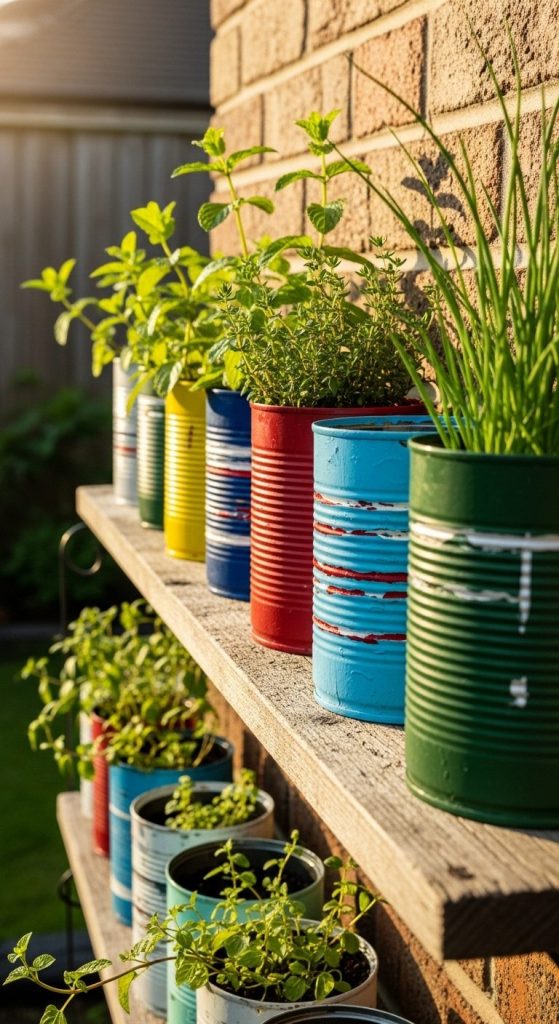
Got old coffee cans or soup tins? Don’t toss them — upcycle them into adorable herb pots with a coat of paint and some drainage holes.
Pros:
- Eco-friendly and sustainable.
- Customizable designs and colors.
- Great conversation starters!
Cons:
- Metal heats up quickly under the sun.
Takeaway:
Perfect for creative souls who love giving old things a new purpose.
7. Wooden Crate Herb Box
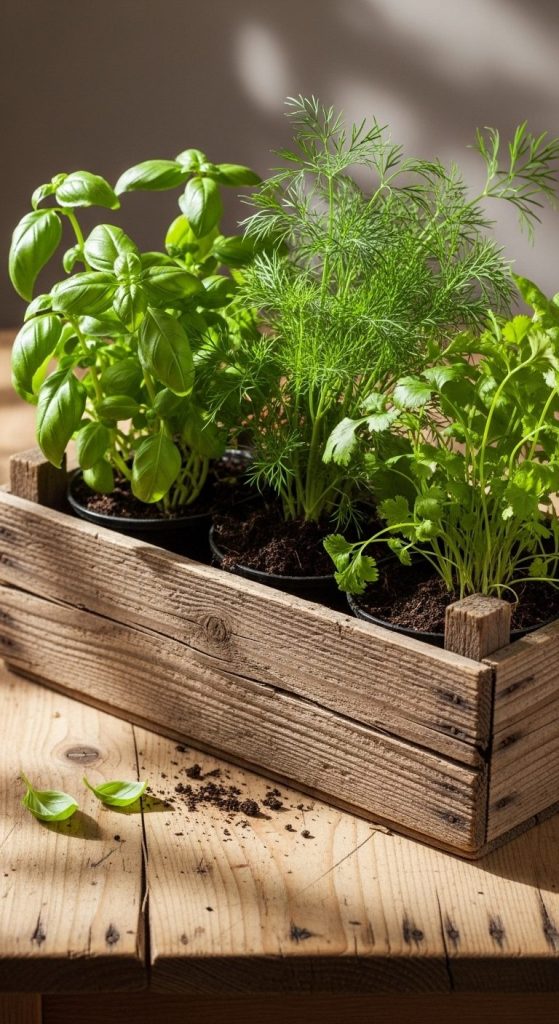
Nothing says “farmhouse chic” like herbs growing in a rustic wooden crate. Line it with plastic and fill it with potting soil for a natural, cozy display.
Pros:
- Aesthetic and functional.
- Easy to move and rearrange.
- Can hold multiple herbs together.
Cons:
- Wood may rot over time if not sealed.
Takeaway:
A warm, organic option that fits beautifully on patios or kitchen countertops.
8. Teacup or Ceramic Pot Collection

Mix and match quirky teacups or colorful ceramic bowls for small, delicate herbs like chives or dill.
Pros:
- Unique and charming.
- Ideal for decorative indoor spaces.
- Great for gifting.
Cons:
- Limited space for root growth.
Takeaway:
If aesthetics matter as much as function, this setup blends art and gardening effortlessly.
9. Balcony Rail Planters

Perfect for apartment dwellers, railing planters keep herbs close without taking up valuable floor space.
Pros:
- Optimizes balcony space.
- Herbs get full sunlight and airflow.
- Easy to install and harvest.
Cons:
- Needs sturdy brackets and secure setup.
Takeaway:
An ideal urban solution for growing plenty of herbs in limited outdoor areas.
10. Indoor Hydroponic Herb Garden
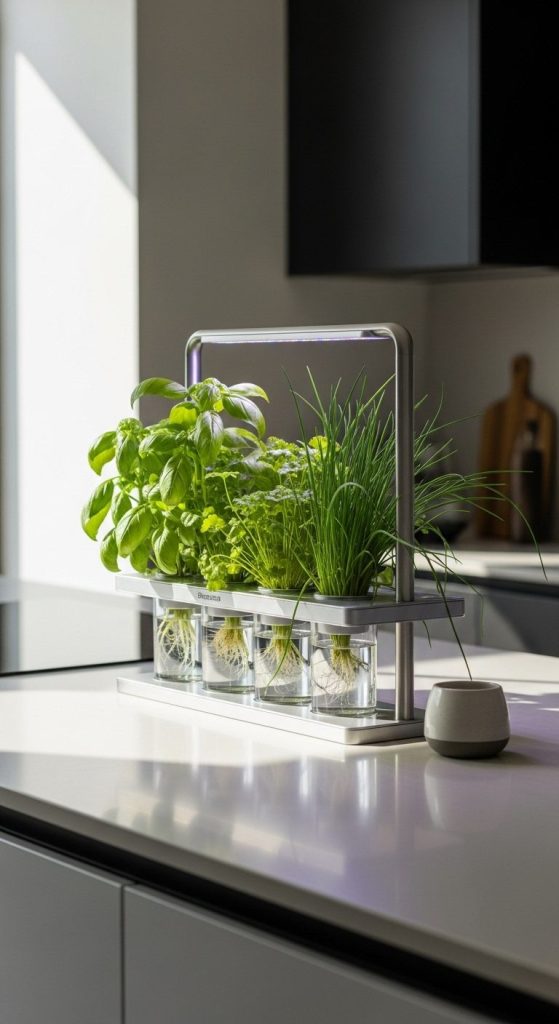
Tech meets nature. Hydroponic systems let herbs grow in water instead of soil — no mess, just fresh herbs.
Pros:
- Low maintenance and self-watering.
- Perfect for kitchens with little sunlight.
- Fast-growing and efficient.
Cons:
- Higher upfront cost.
Takeaway:
If you love tech and convenience, hydroponics are the future of home herb gardening.
11. Tabletop Herb Tray

Use a shallow wooden or metal tray filled with small pots for a compact, portable herb display.
Pros:
- Neat and organized look.
- Easy to carry outdoors for sunlight.
- Great centerpiece for kitchen tables.
Cons:
- Limited to small herbs.
Takeaway:
A lovely, low-effort option that doubles as decor and utility.
12. Repurposed Ladder Garden

Old ladder lying around? Lean it against a wall and use each step to hold potted herbs — a rustic vertical display that’s pure charm.
Pros:
- Creative and sustainable reuse.
- Excellent for tight outdoor spaces.
- Herbs get good light exposure.
Cons:
- Needs stable footing.
Takeaway:
Rustic yet clever — the ladder garden proves you don’t need fancy materials to make something stylish.
13. Window Box Herb Garden

A window box packed with herbs is both practical and picturesque — especially for cooks who love reaching out for fresh greens mid-recipe.
Pros:
- Maximum sunlight exposure.
- Enhances curb appeal.
- Keeps herbs easily accessible.
Cons:
- Exposure to rain and wind may affect plants.
Takeaway:
A classic European touch that makes your home feel instantly more inviting.
14. Herb Cart or Rolling Planter
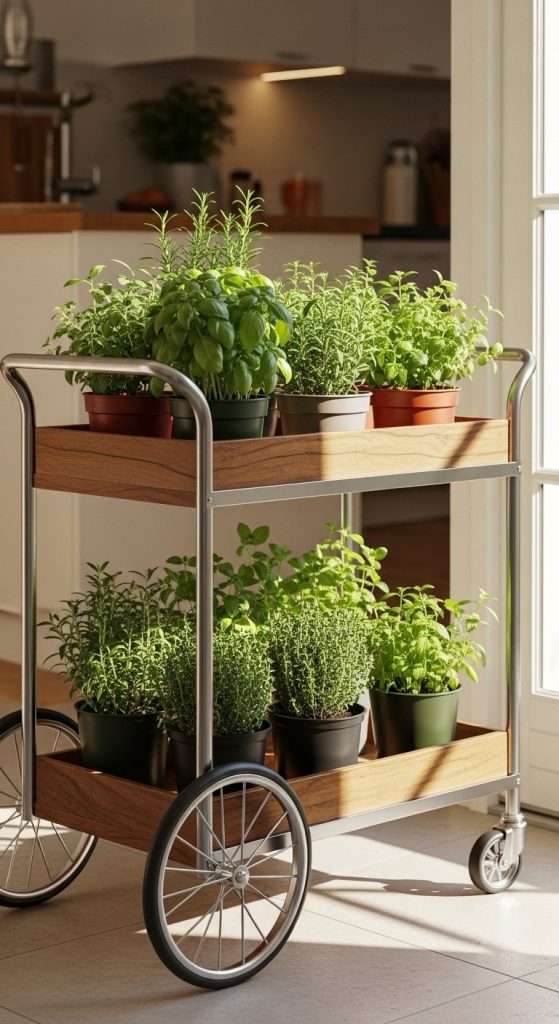
Need flexibility? A rolling cart lets you move your herbs wherever the sunlight goes.
Pros:
- Portable and adaptable.
- Can hold multiple layers of pots.
- Great for changing seasons or light conditions.
Cons:
- Requires sturdy wheels and structure.
Takeaway:
Perfect for urban gardeners who love rearranging their setups — convenience meets creativity.
15. Mixed Aesthetic Herb Cluster

Who says all pots have to match? Combine terracotta, metal, ceramic, and glass for a bohemian, lived-in look.
Pros:
- Visually dynamic and creative.
- Encourages collecting unique containers.
- Each herb gets the pot that suits it best.
Cons:
- Can look messy if not balanced well.
Takeaway:
Let your personality shine — mismatched doesn’t mean chaotic when done with intention.
Conclusion
Potted herb gardens aren’t just about growing plants — they’re about bringing life, color, and freshness into your home. From humble terracotta pots to futuristic hydroponics, there’s a setup for every lifestyle. Personally, there’s something grounding about snipping your own parsley or inhaling mint before you brew tea — it connects you to the process of cooking and to nature itself.
Whether you start with one pot or fifteen, the key is to enjoy it. Experiment, get your hands a little dirty, and celebrate every new sprout. Your kitchen, balcony, or window will thank you — and so will your taste buds.

Ashley Ellison is a skilled writer and avid bowler. Her passion for storytelling and dedication to the sport have led her to participate in various national bowling leagues. With a unique combination of talents, Ashley approaches every challenge with creativity and a relentless drive to succeed.

